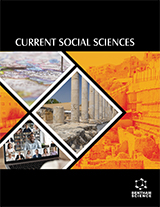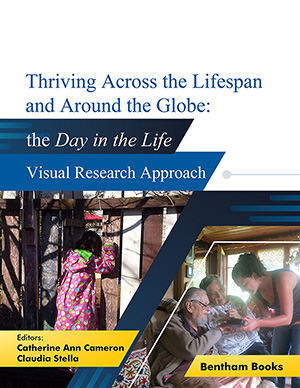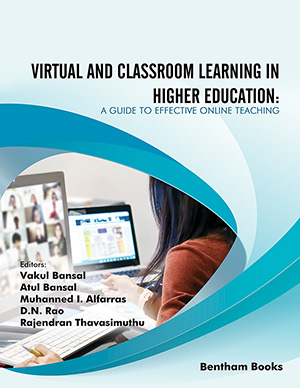Cinematic Popular Culture and Education
Page: 3-12 (10)
Author: Reuben M. Castagno
DOI: 10.2174/9781608058105113010004
PDF Price: $15
Abstract
This introductory chapter explores the important and yet understudied aspect of pedagogy within a cultural context: the use of cinematic pedagogy in education. In light of the great increase of a multimedia mediated popular culture, it is essential to explore and understand the ways in which how educators may be able to connect popular cinema to pedagogy. The use of popular film to engage teachers in reflecting on their ideas and assumptions about a range of educational issues is an important way to bring educational pedagogy and popular culture together.
Popular Cinema, Reflection, and Rational Reconstruction in Education
Page: 13-24 (12)
Author: Reuben M. Castagno
DOI: 10.2174/9781608058105113010005
PDF Price: $15
Abstract
Habermas (1979) views the individual both as an autonomous speaker and as one participating among others within two worlds: the inner and outer. The unification of the inner and outer worlds of the speaker is made possible by the speaker’s discourse-centered act. Communicatively, the speaker has a first-person relation to his/her inner world, a third-person relation to the outer world; and most important a second-person relation to the social world of interaction. This triangulation provides the grounds for the speaker’s autonomy, for a meaningful communication among others, and the possibility of reflection in the form of rational reconstruction (Habermas, 1998).
Habermas’s Domains of Reflection and Discursive Acts
Page: 25-35 (11)
Author: Reuben M. Castagno
DOI: 10.2174/9781608058105113010006
PDF Price: $15
Abstract
In order to assess the different varieties of educators’ cinematic reflective practices, the researcher made use of the subjects’ cinematic journals, cinematic essays, and the planning of a classroom cinematic learning experiences. The researcher conducted a “document content analysis”, a widely used method in qualitative inquiry (Frankel & Wallen, 1993). The basis of analysis was the unit of educators’ conceptual thinking on the connection of popular cinema to pedagogy. A thought unit in this study was defined as the written entry indicating a repeatable discernible segment of a reflective claim regarding the self (i.e., the speaker/writer), the other(s), and/or a combination of the speaker and the other presenting something inter-subjective).
Overall Study Results
Page: 36-48 (13)
Author: Reuben M. Castagno
DOI: 10.2174/9781608058105113010007
PDF Price: $15
Abstract
In this chapter, it is important to keep in mind the following operational definitions of Habermas’s terms: the domain of technical reflection (instrumental rationality) refers to all units of thinking related to the way one controls and/or manipulates one’s environment. The domain of practical reflection is defined as all units of thinking related to speaker’s social interaction governed by consensual norms that define reciprocal expectations about behavior between individuals. The domain of emancipatory reflection is defined as all units of thinking related to insight gained through critical self-awareness and leading to transformed consciousness.
Discussion and Conclusions
Page: 49-74 (26)
Author: Reuben M. Castagno
DOI: 10.2174/9781608058105113010008
PDF Price: $15
Abstract
The technical and practical way that educators appropriated popular cinema for pedagogical purposes, primarily with the technical interest driving the practical application and under the orientation of the various combinations of Speaker/Other/Intersubjective, demonstrates how Habermas’s framework can be helpful in characterizing dominant trends of thought in this empirical area. The educators’ Technical/Practical reflection or instrumental rationality was captured in our study by coding reflective moments regarding planning and implementing classroom use of film. These moments appeared in the three expressive modalities: cinematic journals, cinematic essays, and cinematic learning experiences. The educators saw popular film as a tool that provides ways to control and manipulate one’s teaching environment.
APPENDIX A: Cinematic Learning Experience: Format
Page: 75-77 (3)
Author: Reuben M. Castagno
DOI: 10.2174/9781608058105113010009
APPENDIX B: Cinematic Learning Experiences (Samples)
Page: 78-85 (8)
Author: Reuben M. Castagno
DOI: 10.2174/9781608058105113010010
APPENDIX C: Cinematic Essays (Samples)
Page: 86-91 (6)
Author: Reuben M. Castagno
DOI: 10.2174/9781608058105113010011
APPENDIX D: Journal Entries (Samples)
Page: 92-96 (5)
Author: Reuben M. Castagno
DOI: 10.2174/9781608058105113010012
APPENDIX E: Movie Index
Page: 97-97 (1)
Author: Reuben M. Castagno
DOI: 10.2174/9781608058105113010013
Introduction
This e-book presents a crucial work in the systematic study of educators’ cinematic reflections and to what extent could these be interpreted in terms of the theoretical framework of Habermas’s domains of reflection and discursive acts. The chapters in this volume altogether describe important theoretical developments, data analysis, and significant findings about the importance of popular film in pedagogy. The topics in this book present an exploratory view of reflective practices, cinematic experiences and journaling. Sample essays are also provided for the benefit of readers. It is through these converging possible cinematic explorations that we may be able to move from solitary/monologic reflective practices to a rational reconstructive educational pedagogy. This e-book will be of interest to students, researchers and teachers in the realm of psychology, education and pedagogy.













